Electric vehicles (EVs) are changing the way we drive, making greener journeys part of everyday life. And with the ban on new petrol and diesel vehicles just around the corner, many UK drivers are already choosing electric.
In this guide, we’ll look at trends in EV adoption, as well as some of the challenges slowing down uptake and what it means for drivers across the UK.
Why do we need EVs?
As transport accounts for nearly a third of the UK’s greenhouse gas emissions, switching to electric is no longer just a ‘green’ choice, it’s essential.
Electric vehicles (EVs) are not only better for the planet, but they’re cheaper to run and maintain, quieter, and smoother to drive. And with the UK’s charging network expanding fast, it’s a great time to make the switch.
How fast is the EV market growing?
Over the past decade, electric vehicle sales have grown steadily. There are now more than 1.6 million electric and hybrid cars on UK roads, mostly thanks to handy government grants and tax benefits that have made going electric an appealing option.
New vehicle registrations have also continued to increase, with the number of new electric cars and vans on the road rising by 360,000 between 2020 and 2024[LS1] . With the government set to ban new petrol and diesel cars by 2030 (and vans by 2035), UK drivers need to make the change sooner rather than later.
The best selling electric cars
There’s a handful of EV models that dominate the market, and there’s no surprises that Tesla is the best-selling manufacturer to date.
- The Tesla Model 3 is the UK’s best-selling EV of all time, but coming a close second is the Tesla Model Y, which has already had over 110,000 registrations since its release and is the top selling EV of 2025 so far.
- Another long standing favourite is the Nissan Leaf and newer models like the Audi Q4 and Volkswagen Tiguan are also starting to climb the ranks.
- Whilst not yet topping the list, the emergence of Chinese brands, such as BYD, is fundamentally reshaping the market. With BYD briefly surpassing Tesla in global new car registrations, these manufacturers are proving they can deliver high-spec cars for low prices, making EV ownership more accessible and tackling the biggest hurdle for drivers: upfront cost.
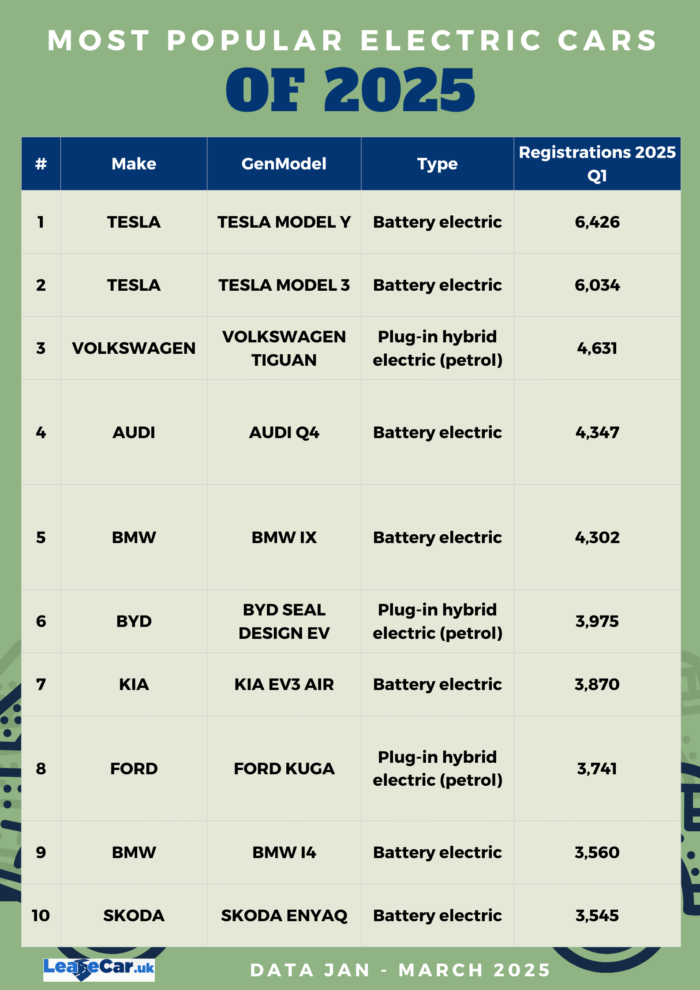
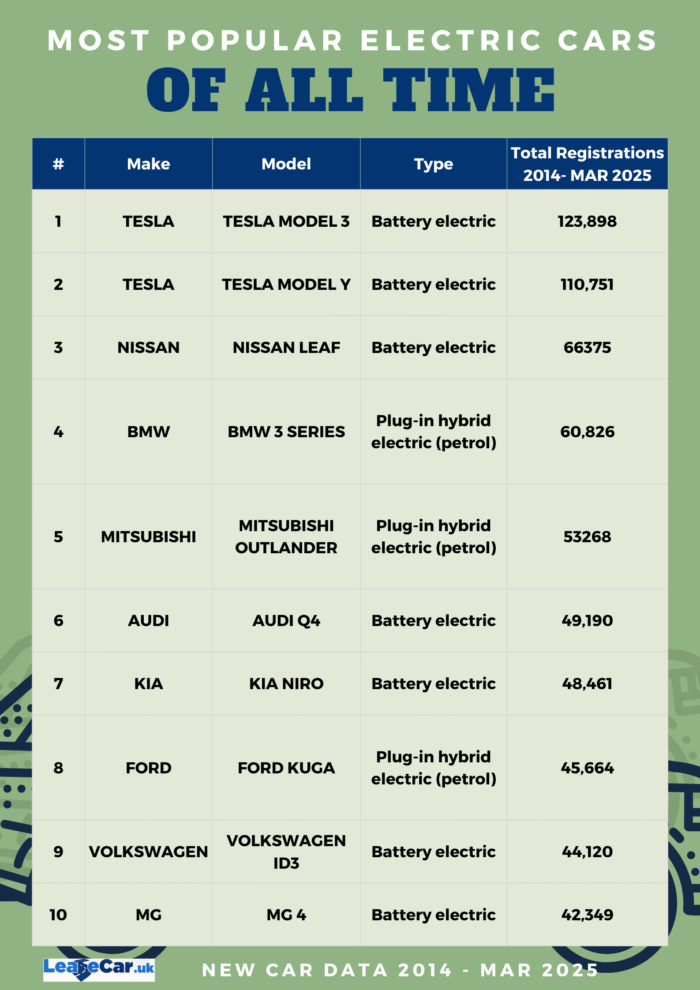
All EV registration data runs from 2014 until March 2025. Registrations refer to new car registrations
Electric van fleets are catching up
Electric van registrations have been slightly slower than cars but are now becoming a popular choice for many businesses and independent traders in the UK.
- The Vauxhall Vivaro is the most popular electric van to date, with almost double the number of registrations as its nearest rival, the Nissan NV200. [LS1] The Nissan NV200 will only fall in popularity, as it has been discontinued and was replaced by the Nissan Townstar Electric.
- 2025 has been the year of the Ford Transit custom, with the plug-in hybrid and electric versions being the van of choice for many businesses.
A few plug-in hybrid vans make the top 10 for 2025, but don’t feature in the all-time registration list.
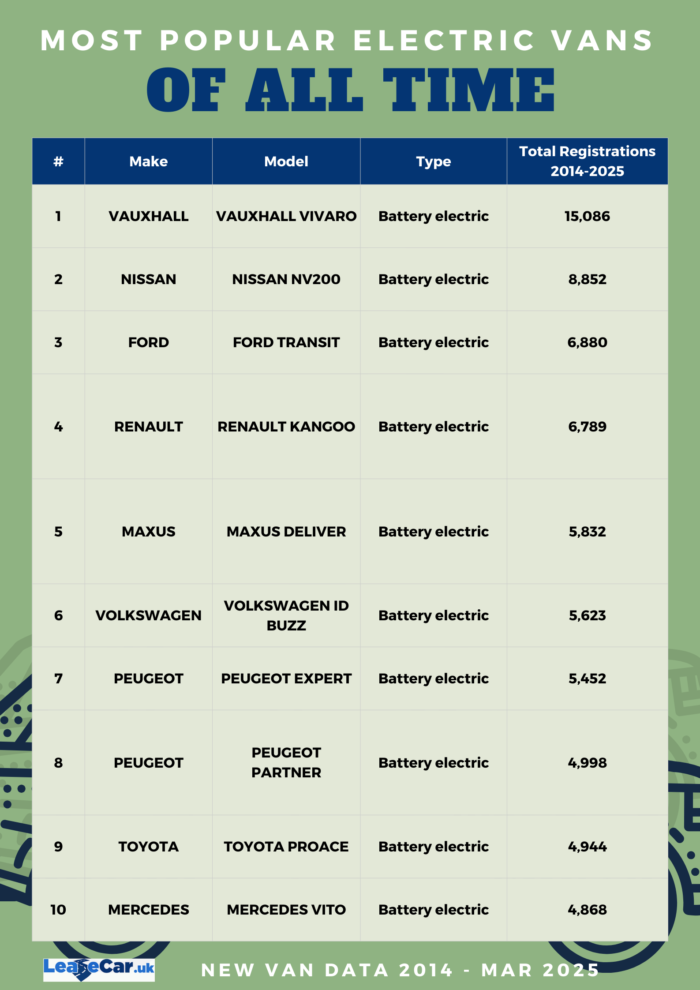
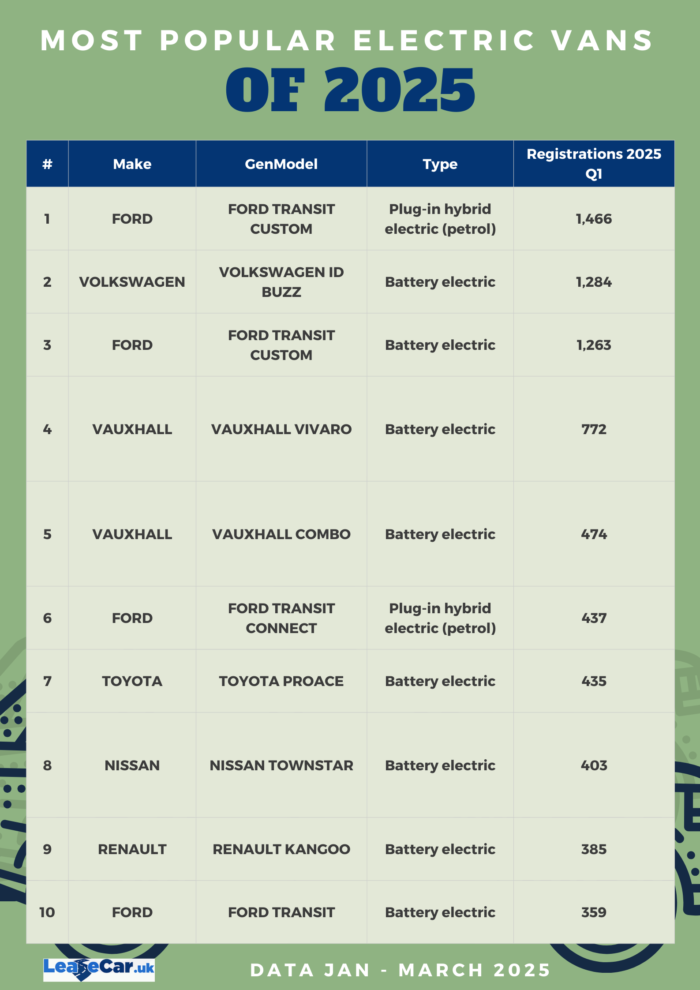
Where in the UK are EVs most popular?
EV adoption isn’t the same everywhere – some regions are moving ahead, while others are a bit slower to catch on. Infrastructure, local demographics, and driving habits all play a part, as well as access to charging points.
- The South East – leading the way, with around 497,000 electric cars and 21,000 electric vans registered – more than anywhere else in the UK.
- The North East – slower uptake, with around 32,000 electric cars and 3,000 electric vans registered.
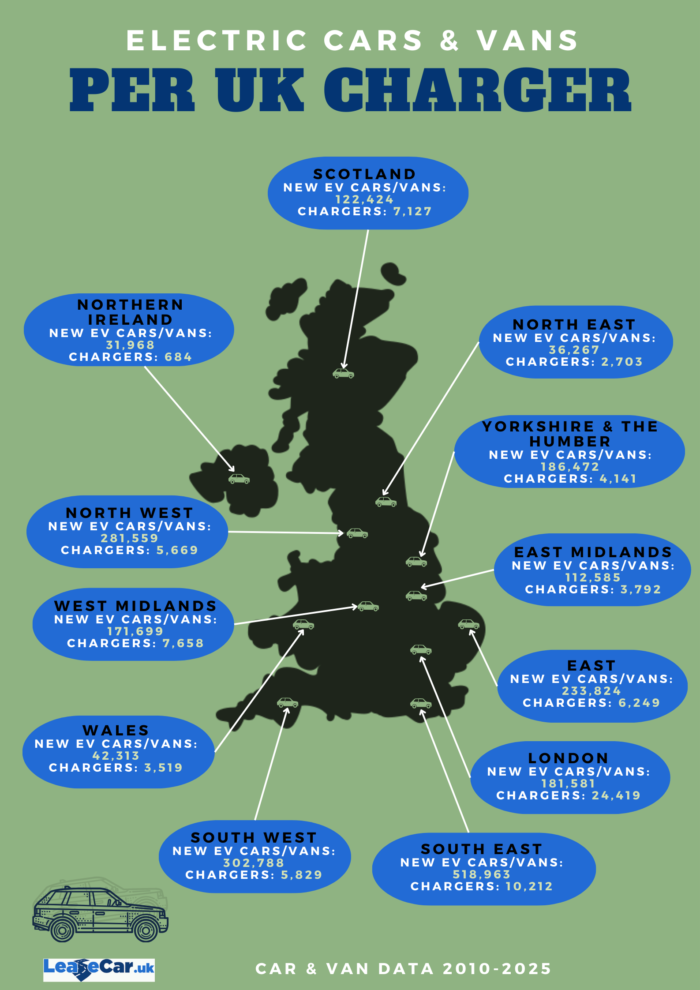
Are there enough EV charging points?
The UK’s EV charging network is expanding fast, but some regions are better covered than others – and that can make a difference for drivers.
- London – Despite being the least car friendly region, it has the most public EV charging points. Although there is a lower amount of registered EVs, with just 7 EVs per charger.
- The South West – There are 52 EVs for every charger, which could make charging a challenge.
In areas with fewer public chargers, drivers often rely on home charging or careful journey planning. Where you live plays a big role in how easy it is to own an EV and access charging.
We used data comparing the number of EV public chargers per region, comparing this against total registered EV cars and vans combined per region. We divided the number of chargers per electric car to see where demand had the most strain.
Availability of rapid EV chargers[LS1]
Rapid EV chargers (50kW and above) are a crucial part of the UK’s EV network, letting drivers charge quickly and keep journeys moving, which are ideal for motorway stops or longer trips.
But coverage varies widely across the UK:
- The South East has the most rapid chargers
- Northern Ireland has the least rapid chargers at 188
- Scotland has 2,042 rapid chargers, supporting growing EV adoption
Rapid chargers are becoming more common, but drivers in some areas still need to plan trips carefully or rely on slower chargers for longer journeys.
So, what’s holding drivers back?
Cost is still the biggest barrier when it comes to EV adoption – 62% of people say affordability stops them switching. Whilst running costs are lower, EVs still cost more upfront than petrol or diesel cars. Charging can be tricky too, especially in regions where the network is stretched, and even rapid chargers take longer than a fuel stop.
The good news? Falling battery costs, a popular second-hand market, and new finance options are making EVs easier to access. With the petrol and diesel ban just five years away, the market will only keep growing.
Looking to make the switch? Find out more in our electric vehicle guides and explore our range of electric cars and vans available for lease today.
